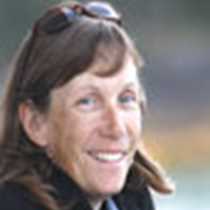San Jose Channel & Isla San Francisco
This morning, with calm seas in the Gulf of California, we gathered on deck to watch for the green flash. Some of us still think this atmospheric phenomenon belongs in the realm of fiction, but others clearly saw the green flash (or blip) visible just before the sun came over the horizon. Soon after the green flash most of us went below for breakfast. But a few stayed on deck to pursue something of a different color. This color was blue.
As it turned out, while our naturalists Al and Lee were watching for the green flash this morning, they saw some tall blows on the distant horizon. As we ate breakfast, the ship repositioned to see what we could find. Before breakfast was over, we were rewarded with blue whales, the largest animals to ever live on the planet. The height of the blow was noticeably taller than those of the other whales we have seen this week; the dorsal fin, a small speck in comparison to its massive, long back. When the whales were just below the surface we could see the blue coloration from which they get their name.
As we moved on to our afternoon destination, whales continued to be a theme, this time of the toothed variety. Bottlenose dolphins, common dolphins and pilot whales altered our course and interrupted our activities throughout the morning. Of course, no one feels bad about being interrupted when the reason is “we have bow-riding dolphins,” or “there are 20 pilot whales ahead!”
This afternoon we anchored in Half Moon Bay of Isla San Francisco and ventured ashore to see the desert firsthand. Kayakers enjoyed a peaceful paddle around the cove. Red volcanic cliffs provided a scenic backdrop while blue-footed boobies, yellow-footed gulls and brown pelicans added some entertainment. Hikers met the local island residents: several cacti and desert plants that manage to thrive in this dry environment. Beach combers enjoyed a long, curving, white sandy beach, perfect for a late afternoon stroll.
This morning, with calm seas in the Gulf of California, we gathered on deck to watch for the green flash. Some of us still think this atmospheric phenomenon belongs in the realm of fiction, but others clearly saw the green flash (or blip) visible just before the sun came over the horizon. Soon after the green flash most of us went below for breakfast. But a few stayed on deck to pursue something of a different color. This color was blue.
As it turned out, while our naturalists Al and Lee were watching for the green flash this morning, they saw some tall blows on the distant horizon. As we ate breakfast, the ship repositioned to see what we could find. Before breakfast was over, we were rewarded with blue whales, the largest animals to ever live on the planet. The height of the blow was noticeably taller than those of the other whales we have seen this week; the dorsal fin, a small speck in comparison to its massive, long back. When the whales were just below the surface we could see the blue coloration from which they get their name.
As we moved on to our afternoon destination, whales continued to be a theme, this time of the toothed variety. Bottlenose dolphins, common dolphins and pilot whales altered our course and interrupted our activities throughout the morning. Of course, no one feels bad about being interrupted when the reason is “we have bow-riding dolphins,” or “there are 20 pilot whales ahead!”
This afternoon we anchored in Half Moon Bay of Isla San Francisco and ventured ashore to see the desert firsthand. Kayakers enjoyed a peaceful paddle around the cove. Red volcanic cliffs provided a scenic backdrop while blue-footed boobies, yellow-footed gulls and brown pelicans added some entertainment. Hikers met the local island residents: several cacti and desert plants that manage to thrive in this dry environment. Beach combers enjoyed a long, curving, white sandy beach, perfect for a late afternoon stroll.




